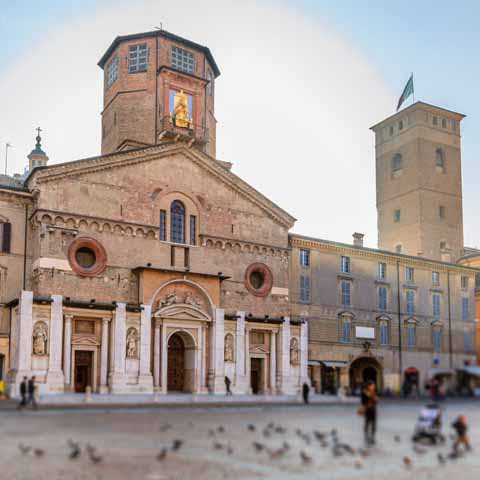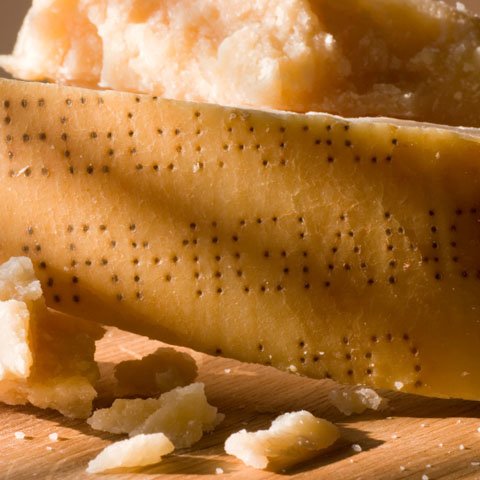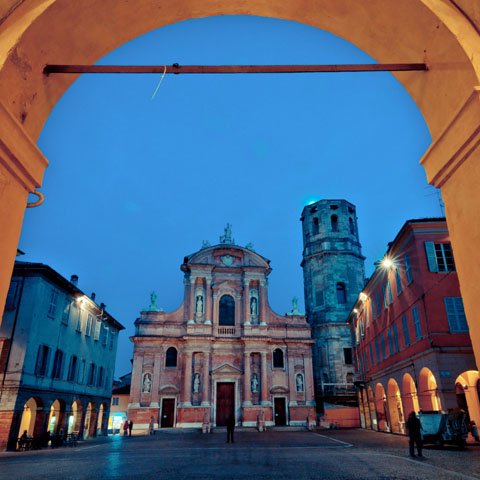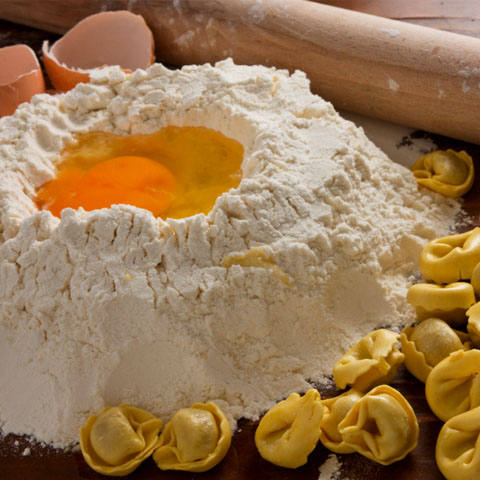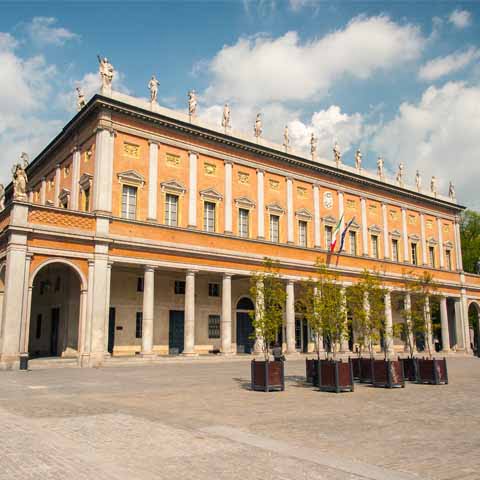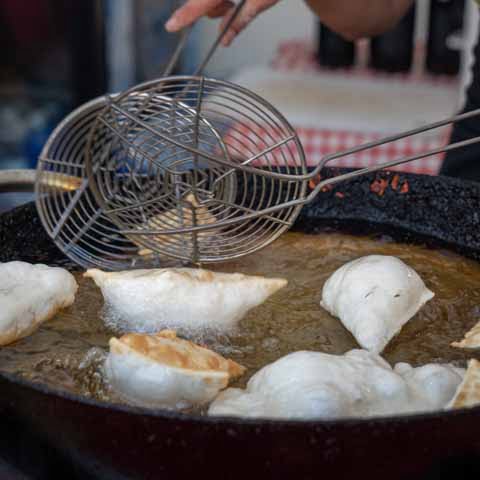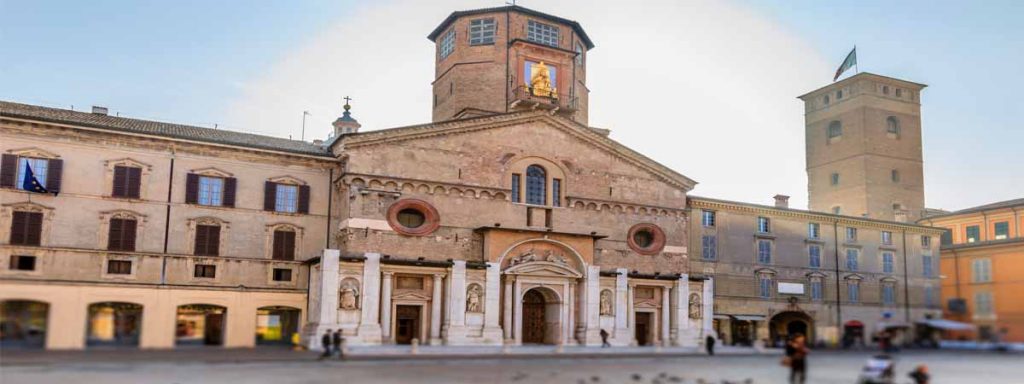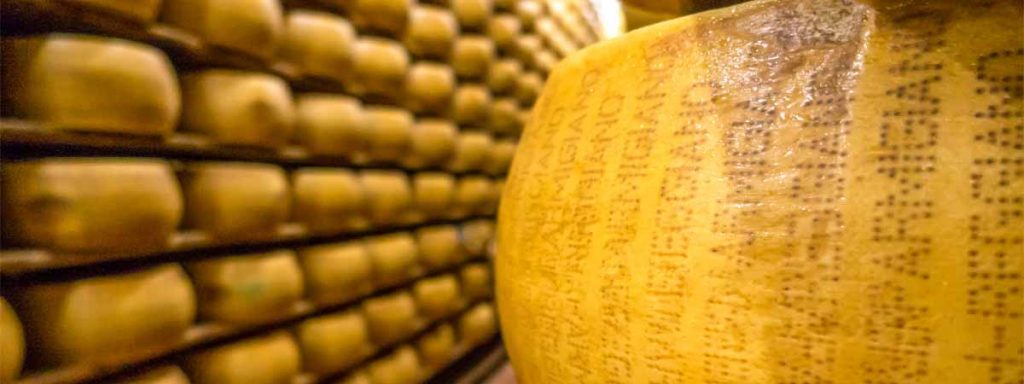The beautiful, unassuming city of Reggio Emilia in Northern Italy is rich in tradition and culture. This quiet community is modestly proud of their history that is still evident today in the city’s architecture, art, and literature. To visit Reggio Emilia is to feel at home amongst good friends and beautiful surroundings that exemplify the quintessential charm Italy is known for.
ARCHITECTURE
The Basilica della Ghiara is considered by many as the main church in Reggio Emilia. This sixteenth century Baroque structure is said to have been built in part because of a miracle where a deaf and dumb person was suddenly and mysteriously given the powers of speech and hearing as they prayed before a painting of the Madonna. Beside the church still today a marble memorial stands in honor of that miracle. The exterior of the building consists of dark neutral tones and features a small dome and ornate overhangs enveloping dark wooden doors. The interior of the church is stately and majestic, with intricate details woven throughout the grounds. The ground floor of the basilica’s cloister features the Museum of the Beata Vergine della Ghiara, where the church’s treasures, such as silverware, and important documents are kept.
Not to be missed is the Cathedral of Santa Maria Assunta. The church originally dates back to the ninth century and was constructed in the Romanesque style, however it was subsequently rebuilt in the seventeenth century. The interior features rich marble sculptures, elegant chapels, and a highly detailed crypt. Inside, travelers can also admire artwork by Guercino, Prospero Sapni, Palma the Younger, and more.
The Basilica di San Prospero is a tenth century structure originally dedicated to Bishop Prospero, who was considered to be the Holy Protector of the town. Throughout the years, the church received several renovations, updates, and additions, which reflect the structure visitors see today. The church sits at the head of an open-air square and its exterior features eight stately columns, arched windows, and a multitude of statues. The interior of the church showcases frescoes of the Biblical Last Judgement and a wooden choir loft, which is a prime example of the art of marquetry of the fifteenth century in Reggio Emilia. The basilica also features an octagonal tower that dates back to the sixteenth century and was never completed. This beautiful church is certainly a must-see while visiting the city.
In the historical city center of Reggio Emilia sits the Baptistry of Saint John the Baptist. Although the Latin cross plan and baptismal font remain, the twelfth century structure did undergo largely Renaissance style renovations during the fifteenth century. The exterior of the building is somewhat simple in nature, but the interior features a gorgeous fresco of the Baptism of Christ painted by Francesco Caprioli, and a magnificent red marble baptismal font.
Also located in the center of town is the Church of San Giovannino. Although the church is thought to have roots tracing all the way back to the thirteenth century, not much of the original structure exists today. The structure visitors see today is more of a product of the sixteenth century. The main attraction for visitors at the Church of San Giovannino is the interior breathtaking collection of frescoes by various artists depicting a wide variety of Biblical scenes.
One of the more unusual pieces of architecture in Reggio Emilia are the Autostrada A1 bridges. The landmark is actually three modern bridges, all designed by Santiago Calatrava. These bridges connect the main Italian roadway that runs north to south, Austostrada del Sole A1, to the city of Reggio Emilia. When looked at from a certain angle, many say the bridges, which won a European Steel Design Award in 2009, closely resemble large, stringed musical instruments.
ART
Antonio Allegri da Correggio was a fifteenth and sixteenth century painter born in Correggio, which is located in the province of Reggio Emilia. Although many of his works were known for their illusionistic perspective, Correggio is thought to have become a proficient master of chiaroscuro, a strong contrast between light and dark. He spent much of his career in Parma where he painted renowned works such as Madonna and Child, Virgin and Child with the Young Saint John the Baptist, Adoration of the Magi, Assumption of the Virgin, and many more.
Anselmo Govi was a famed Italian painter and decorator of the twentieth century born in Reggio Emilia. Some of his artistic contributions to the city were to serve as the Director of the Art Institute Gaetano Chierici and as President of the Cooperative of Painters and Decorators of Reggio Emilia. Considered to be his most notable works are the frescoes found on the cupola of the city’s Ariosto Theater.
Italian sculptor Giacomo Benevelli was born in Reggio Emilia in the first quarter of the twentieth century. He lived and studied in various places throughout Italy and his works have been displayed across the globe. He was a member of the Tiberina Academy, an educational institution established to promote Italian arts, and was awarded the Gold Medal of Merit in Fine Arts by the Italian government. One of his more famous works is Teleios, a bronze sculpture displayed in Milan.
Reggio Emilia is home to a variety of beautiful works of art that are admired by visitors from all over the world. One example is the altarpiece by Guercino found in the Basilica della Ghiara, which is considered to be one of the most beautiful works of art in the city. Art lovers should also make a point to stop by the crypt of the Cathedral of Santa Maria Assunta, which is decorated with beautiful and highly detailed mosaics.
A few of Reggio Emilia’s roundabouts are decorated with contemporary art, such as an abstract sculpture by local artist Marco Gerra and a marble sculpture by Luca Prandini. Other contemporary works can be admired at the Spazio Gerra, which is dedicated to Marco Gerra. The venue hosts art exhibitions featuring various mediums including photography, cinema, graphic art, comics, and more.
LITERATURE
The province of Reggio Emilia was the birthplace of two of Italy’s most important Renaissance poets. The first was Matteo Maria Boiardo whose most renowned work is the epic poem Orlando innamorato. The work, which was published in three books, follows the adventures of the knight Orlando (also known as Roland) who served under Charlemagne. Ludovico Ariosto, a native of Reggio Emilia, continued the story of Orlando in his famous epic poem Orlando furioso, which is considered to be one of the most important works of poetry in the Italian language.
MUSIC
One of the best places to enjoy music in Reggio Calabria is the Ariosto Theater. The original structure was built in the eighteenth century, though it was destroyed by a fire in 1851 and subsequently rebuilt during the nineteenth century. Dedicated to Reggio’s native son Ludovico Ariosto, the theater features Art Nouveau frescoes that depict scenes from Ariosto’s epic poem. Today, the theater continues to host theatrical and musical performances.
The province of Reggio Emilia was also the birthplace of influential singer-songwriters Zucchero Fornaciari and Luciano Ligabue.
CINEMA
To date, Reggio Emilia has been primarily showcased in various scenes of domestic Italian films. The quiet nature of this city has largely kept it off the radar of international directors and film companies. However, as Reggio Emilia continues to grow and thrive, this beautiful city will no doubt become an attractive filming location for up-and-coming films.
Italian films that have been set in Reggio Emilia over the years include Moglie per una notte (1952), La ragazza con la valigia (1961), Strategia del ragno (1970), Novecento (1976), Radiofreccia (1998), I giorni della vendemmia (2010), Made in Italy (2018), and Volevo nascondermi (2020).
SCIENCE
Reggio Emilia was the birthplace of several notable scientists throughout history including Antonio Pacchioni, who extensively researched the human brain, Lazzaro Spallanzani, who studied biogenesis, Giovanni Battista Venturi, who discovered the Venturi effect, and Angelo Secchi, a prominent nineteenth century astronomer.
Like the rest of the Emilia-Romagna region, Reggio Emilia offers a wealth of culture for visitors to experience. From the beautiful church architecture and the stunning works of historic and contemporary art to the city’s literary and musical legacy, Reggio Emilia offers something for everyone to enjoy.
Travel Guides
The Emilia Romagna Region of Italy
The Cities of Emilia Romagna, Italy
